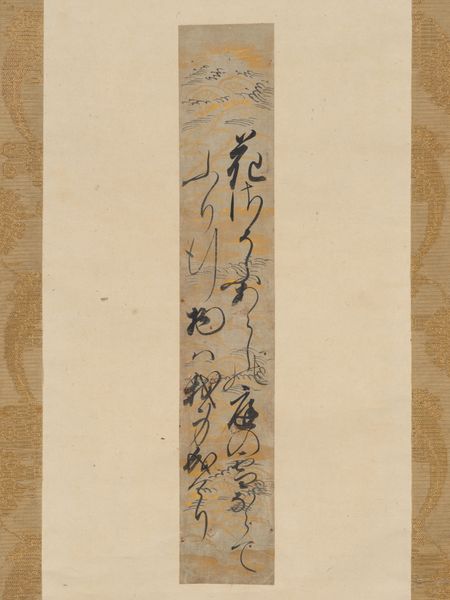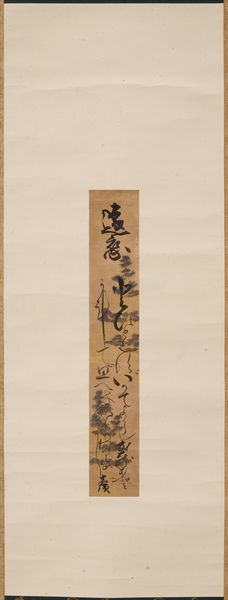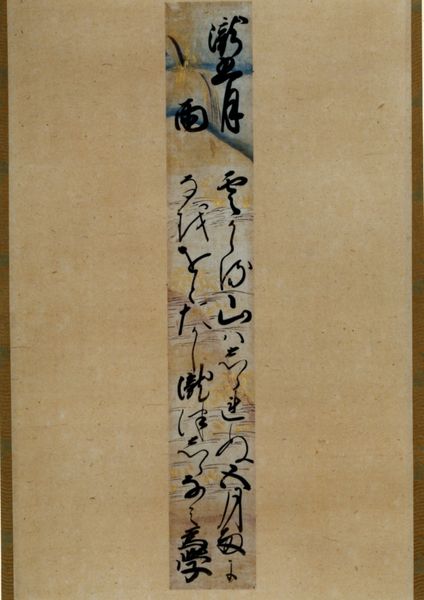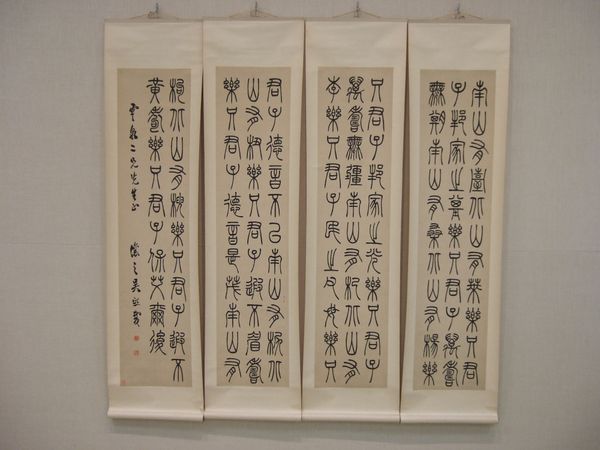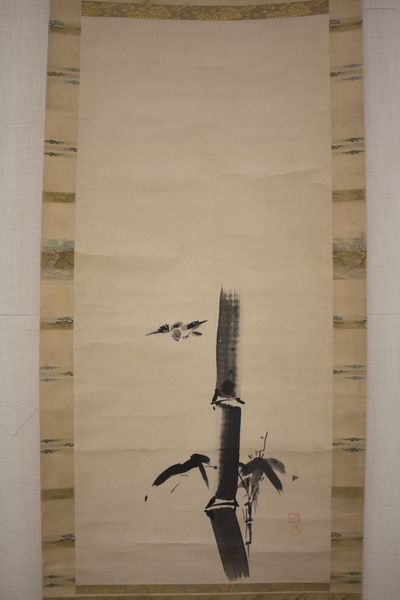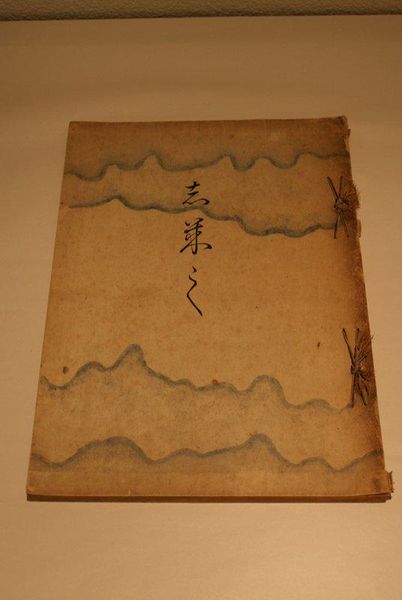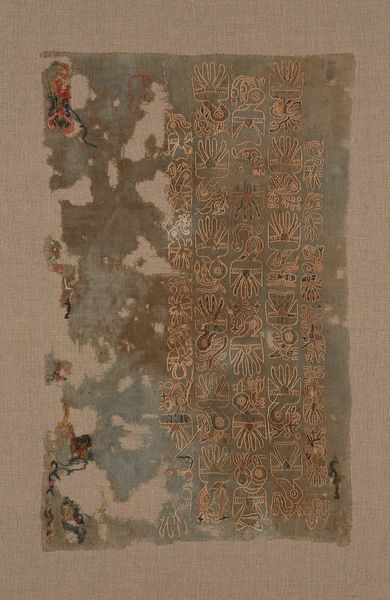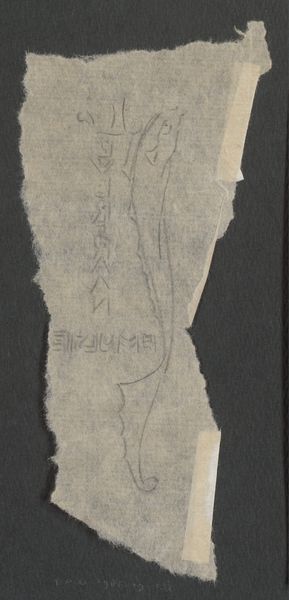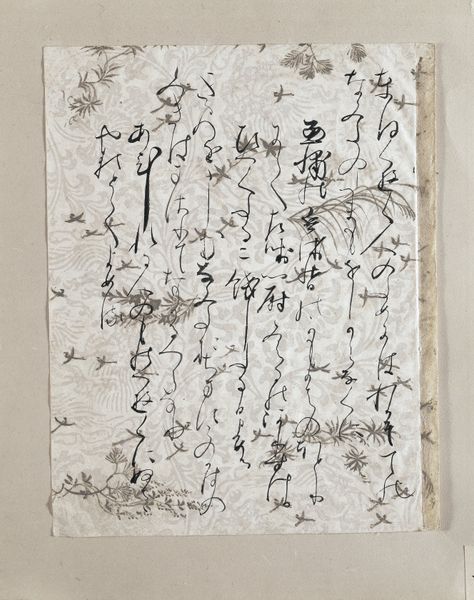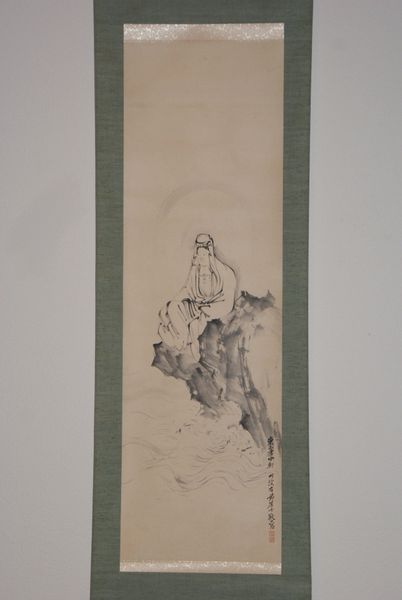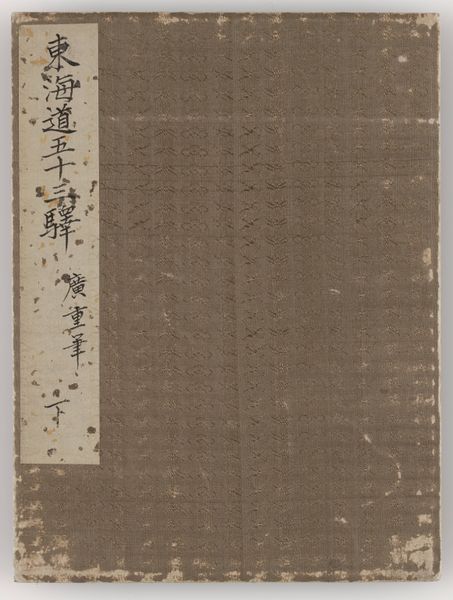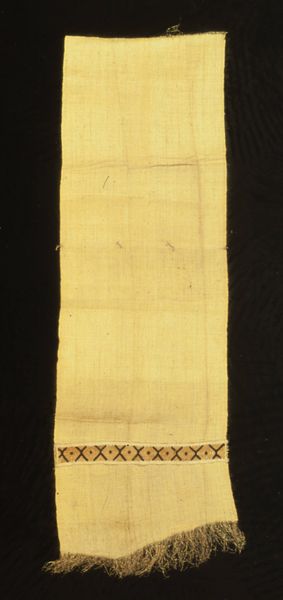
At the Ōi River late 16th - early 17th century
0:00
0:00
drawing, paper, hanging-scroll, ink
#
portrait
#
drawing
#
water colours
#
ink painting
#
asian-art
#
paper
#
hanging-scroll
#
ink
#
line
#
watercolor
#
calligraphy
#
monochrome
Dimensions: 14 5/16 × 2 1/8 in. (36.35 × 5.4 cm) (image, tanzaku)58 1/8 × 8 9/16 in. (147.64 × 21.75 cm) (mount, without roller)
Copyright: Public Domain
"At the Ōi River" is a calligraphic work by Emperor Go-Yōzei, created during a period of significant transition in Japan. Go-Yōzei, who reigned from 1586 to 1611, navigated the complex political landscape of the late Azuchi-Momoyama and early Edo periods, marked by shifts in power and the consolidation of the Tokugawa shogunate. This piece offers a glimpse into the cultural pursuits of the imperial court during a time when its political influence was waning. The choice of calligraphy as a medium reflects the traditional arts embraced by the aristocracy, and Go-Yōzei's engagement with it underscores the importance of cultural capital for maintaining authority and prestige. Consider the emotional weight of this poem, composed by a ruler experiencing a personal connection to nature. The Ōi River becomes a space for contemplation and reflection, offering respite from the demands of imperial life. How does the artwork shape or reflect societal issues, while referencing the emotional and personal dimensions of the piece?
Comments
No comments
Be the first to comment and join the conversation on the ultimate creative platform.

